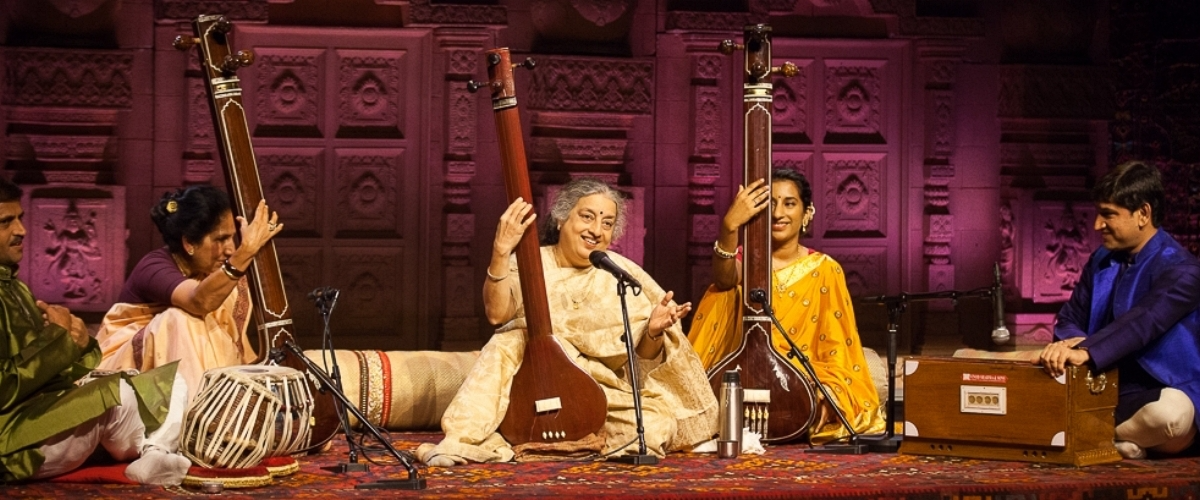

The Jaipur-Atrauli vocalist talks rare ragas from the past, visualising rhythms as warrior-heroes, and the limits of approaching music scientifically.
—Part of Living Traditions: 21 articles for 21st-century Indian classical music
Musically, being 'refined' does not mean being reserved. Refinement does not inherently indicate a lack of fire, energy, or volume. Instead, it describes a near-scientific process of purification, where unwanted elements are carefully removed to leave a finely-tuned whole.
Ashwini Bhide-Deshpande draws on her PhD in biochemistry as well as the traditions of her illustrious musical family. She brought her richly refined khayal vocals to London’s Southbank for Darbar Festival 2018, entrancing the crowd with renditions of Jansammohini and Khem Kalyan (watch below).
I spoke with her the following morning, discussing ancient musical forms over the phones of a hotel reception and roars of passing traffic. This is a condensed and tidied account of our conversation.
Some in the Southbank audience wouldn’t have heard live Indian classical music before - you were their introduction. Unfamiliar sounds elicit different reactions from a listener, so do you feel you change your style when singing to Westerners?
I don’t find I have any differences in my direct musical approach - that is, how I immerse into the raga itself. The music has to be strong enough to communicate to anyone. But other factors can be influenced by the situation. You choose the raga to suit each individual setting. However this is not confined to Western audiences - I also make these choices in India.
I've heard some mention that concerts are getting shorter in India, and have never been long enough in the West. How do you feel performance traditions are changing in the modern world?
Sometimes you can find there are more time restrictions nowadays. But there are still many spaces for genuine traditional performance, even in the West. I remember performing in Geneva and the organisers went out of their way to tell me not to compromise, and sing each raga in its full form.
We as artists must adapt to shorter concerts when they happen. Change is inevitable, and we shouldn’t complain. Also, there are different dimensions of change - recording length has increased rather than decreased. Old records could hold three minutes, and now you can release CDs of over an hour.
You have a PhD, and previously worked as a biochemist and atomic researcher. Scientific thinking is clearly part of your musical approach - it seems that you like to categorise, systematise, and take things apart to understand them. Do you find that scientific and musical thinking sit together easily, or can the mindsets get in the way of each other?
I don’t have to consciously blend them now. Science and music complement each other for me as they are both deeply ingrained, and influence my approach to everything. They build my personality. And in any case, the scientific should not be separated from the aesthetic - I feel they are two sides of the same coin.
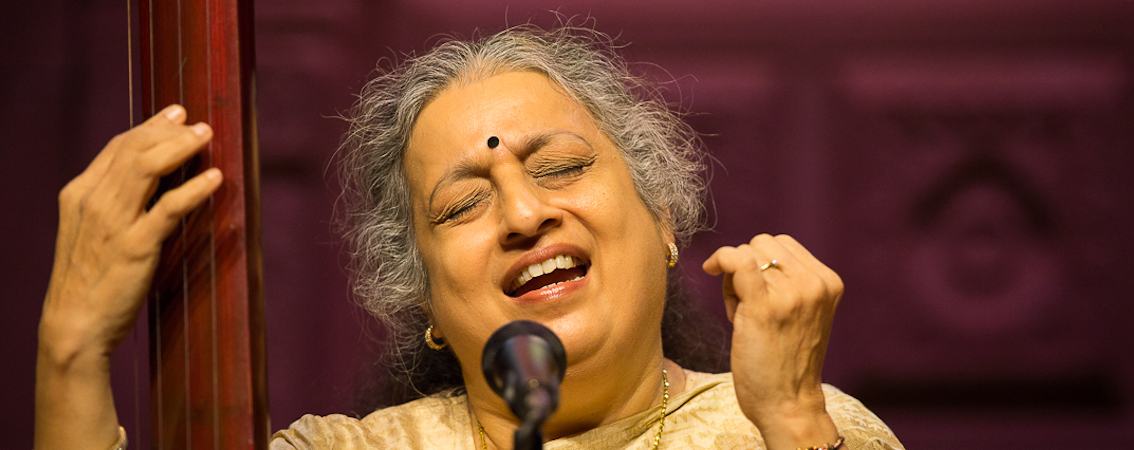
"The scientific should not be separated from the aesthetic'. Photo: Rehmat Rayatt
I have never been that career-oriented. Science was my first priority as a young woman, but music was always there. But back then I didn’t know what my first love was - I could have done science for its own sake, but chose music in the end. God has been kind to me.
I was fortunate - my parents made sure I was well placed in life. I didn’t depend on any career to feed myself. What was essential was my need to find light. I gave up science 30 years ago for the sake of music, initially giving myself a year to explore it on the concert platform. That year has never stopped!
No path to learning is straightforward, but some are harder than others. India isn’t an easy place to be a woman, but many have achieved musical success and deep respect. What advice would you give to young female musicians today about how to find their light?
In modern times, it is easier to sustain yourself in a basic material sense. But modern women expect more than just sustenance - they want to find light and meaning more than their forebears. I didn’t need to look at material support at this time, but for anyone to succeed they must first question what their real purpose is.
You seem to have an affinity for Meera bhajan (songs by or about Meera, the mystic Bhakti poet and devotee of Krishna). Could you elaborate on your emotional connection with Meera?
I don’t relate to Meera as directly as I do to some others, such as Kabir [the 15th-century Sufi poet-saint]. But Meera is important to me as a truly empowered soul. Five hundred years ago, society was even more protective towards women than it is now. In childhood it is the father, in youth it is the husband, in old age the son.
Meera was born royal, which brought even more restrictions than today. She was not supposed to fend for herself or explore music and dance. But despite these boundaries she proclaimed that she would live by what she believed, and was ‘ready to face whatever came’.
What made her do it? Her inner force. She could not suppress her love for Lord Krishna. It ‘had to come out’ - and this is how musicians feel too. It is the power of love and devotion to what you believe and what is inside you.
You often sing bhajan in Bhairavi - a fascinating raga, which can elicit very different emotional responses from each listener. Why can people respond so differently to the exact same performance?
I believe it is very subjective, and not so much a matter of culture. The response will always vary from person to person, but not so much along the lines of East and West.
Elsewhere you speak of ragas as having distinct personalities, and of ‘making friends’ with them. How literal is this process? How do you go about getting to know them?
Ragas certainly have individual character. The personality doesn’t depend on the musician so much as the raga itself. They have their own likes, dislikes, and angularities, and so do the artists who play them. We have to find ragas which suit our personalities. But - like with friendships - it’s about two wavelengths resonating rather than direct similarity.
We must combine in the right ways. This is why certain artists are associated with particular ragas - Amir Khan with Marwa, Bhimsen Joshi with Puriya, and so on. Their wavelengths are completely in tune with each other. This is the only way.
We should take what we do seriously. I was talking about this over breakfast this morning with [sitarist] Purbayan Chatterjee. We were discussing how the pilots on our flight home need over 200 hours experience, and that perhaps ragas aren’t so different to flying. And with ragas you may not be confident even after this much time. You may know all rules, but you can’t know the raga if you don’t resonate.
What do you do if you don’t match? Can you fall out with a raga?
Sometimes you should give a raga up if you cannot get to know it in the first place. But fallouts with a true friend are temporary. Just because you have a difference of opinion then it doesn’t mean they are no longer a friend. It is the same with ragas.
However, you can grow away from a relationship, and give it up in that way. And your relationship with some ragas can be very transient too. But even then they have given you inputs, and the enrichment stays within you.
You often sing rare ragas, including Prateeksha, Bhupeshwali, and Manikouns. Is this primarily motivated by a search for broader and deeper friendships?
Yes - I choose only through my relationship with the raga. I want the raga to befriend me too. If I’m interested in a raga, I want it to be interested in me as well. It is their moods, but I use them for my own search. I must find the forms that are most useful to me, even if the ragas are hard to find. And we must remember that you can bring your tradition forward by looking into the past, to see what has been missed by today's musicians.
In keeping with your Jaipur-Atrauli tradition, you also perform sankeerna [mixed] and achchop [complex] forms. Many famous musicians have gone a step further out and created their own ragas - like Ustad Ali Akbar Khan’s Chandranandan, Pandit Ravi Shankar’s Jogeshwari, and Pandit Shivkumar Sharma’s Antardhwani. Would you ever consider doing this?
Personally I don’t believe in creating new ragas. I’ve made my own forms, but they’re not really new. They were probably already discovered in the past, and just resurfaced again here. Much knowledge has been lost.
Ragas are tools in your hands. If you are a carpenter, you need to be able to handle certain tools easily. If I have to express my emotion through a particular set of notes, then I must find the tool that can do it.
.jpg)
"You can bring your tradition forward by looking into the past". Photo: Rehmat Rayatt
Do you find that talas [rhythm cycles] have distinct personalities too?
My guru said that “no bandish [melodic composition] will ever tell you the tala”, and for me it is not as important as the raga. He used to convert bandishes in rupak to tintal [7 to 16 beats], and vilambit to drut [slow to fast] - you can find their core character through testing them in these different settings.
So I don’t think about tala personalities as much, but agree they are there. For example jhoomra, deepchandi, and dhamar all have 14 beats. But their personalities are very different. Do you know these talas?
Umm...not as well as I should do.
I’ll remind you. [Ashwini taps out the three talas over a passing police siren, and I lament the limits of my recent riyaz].
In jhoomra, beats 3, 7, 10, and 14 are accentuated by the flamboyant Ti-Ra-Ki-Te tabla strokes. I imagine a woman walking. She is appealing to the senses, saying ‘look how I walk this way’.
-Sensual Jhoomra: 3-4-3-4 (from Raag Bhatiyar - Chandrashekhar Naringrekar & Shridhar Padhye)
Deepchandi is structured very similarly, but these Ti-Ra-Ki-Te strokes are now muted. So I picture a dignified woman - perhaps even the same woman. She is not appealing to the senses as much, and will not take so much pride in her own beauty.
-Dignified Deepchandi: 3-4-3-4 (from Raag Mishra Shivranjani - Shivkumar Sharma & Zakir Hussain)
For dhamar it is very different. I see a warrior going onto the battlefield. He is displaying joy in leading his followers, and finding strength in doing so.
-Warlike Dhamar: 5-2-3-4 (from Raag Parameshwari - Ravi Shankar & Alla Rahka)
Seeing talas in terms of walking is very interesting. I’ve mainly learned them by wandering around different cities with headphones on, whispering the bols and syncing my footfall to the rhythms (and sometimes getting odd looks). It’s definitely changed how I hear them - odd-time talas will resolve with your ‘wrong foot’ forward, so you only really get the full physical resolution when you count them through twice. Rupak’s 7 beats feels like a cycle of 14, and so on.
Yes - talas are about walking and clapping. You don’t have to think of it in terms of left and right feet, but you do have to consider the style of the gait. You must be able to feel the cycle either way round.
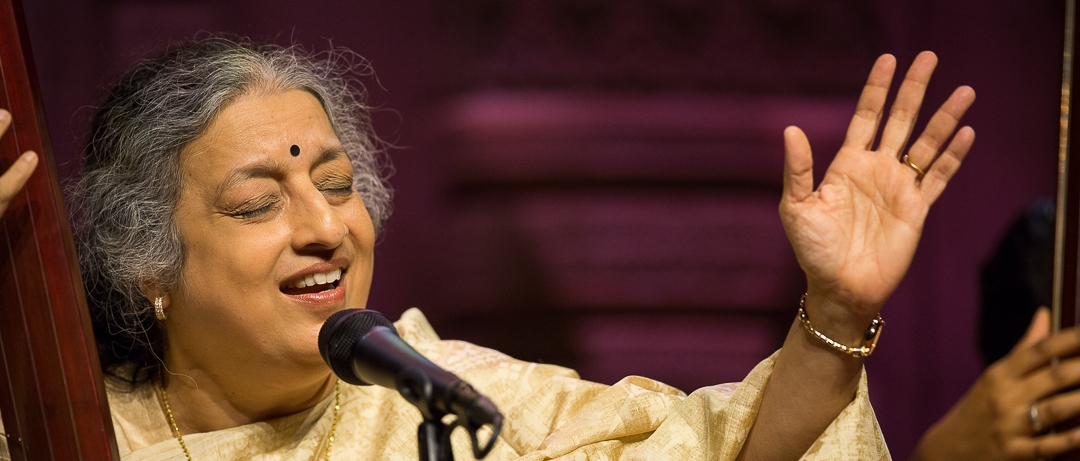
"No bandish will ever tell you the tala". Photo: Rehmat Rayatt
You’ve published hundreds of new bandish in your two Raag Rachananjali books. But the gurukul (master-student) system you trained in is an aural tradition, without much writing. Do you see a greater role for written music in modern Hindustani teaching?
Not really. In the Indian system we believe in a person’s listening capacity. Writing is only ever for convenience, as shruti [microtones] are about the ear. If you listen, take it in, and process it your own way, then what comes out will be yours too. You lose too much in the process of documenting, and it is impossible to write everything which has been said. I don’t believe it will ever be more than a supplement.
I have no guru here in Bristol, but I still feel I should turn to listening rather than written forms. I mainly practice guitar and tabla by shuffling up my iTunes and trying to follow along. There are many global learners who take similar approaches, and are only connected to the Indian classical ‘scene’ via the internet. What do you think about this broadening of teaching methods?
In my mother’s time we only had the radio, but in our modern tech-savvy world there are many tools. It is not just the younger musicians - my generation saw such a lot of transition in the tech field - recorded music, LPs, cassettes, CDs, YouTube, etc. The music bank is always expanding, allowing you to choose what you want to hear and where you want to place yourself.
Many top artists now give lessons on Skype too. The internet is a huge platform. I believe in the power of all these new technical tools, but in the end the one-on-one relationship between student and guru is most important.
It is also a question of focus. If someone wants to do a lateral study then the modern tools are very useful. But for someone who aims to go deep down, that focus can be distracting. When you’re sitting with your guru then you’re not lost in the sea of knowledge that is YouTube.
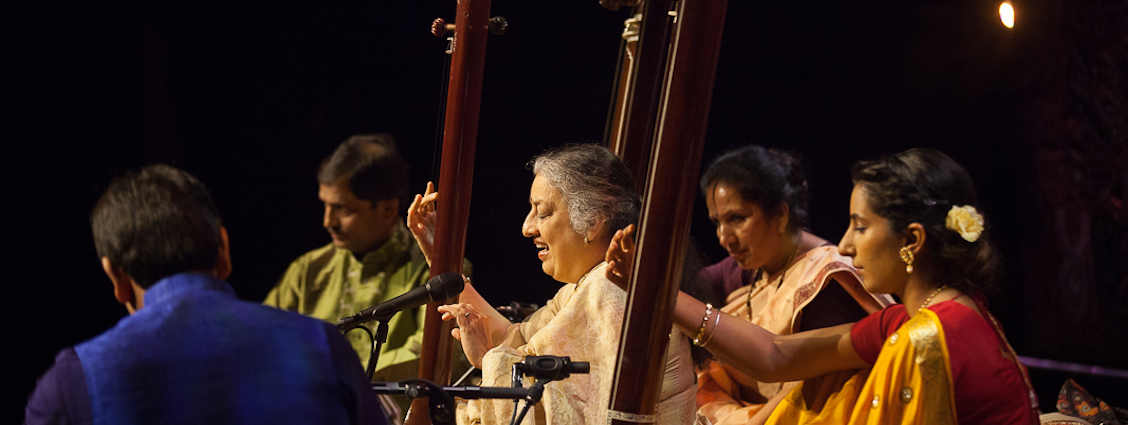
Surrounded by a heavy triple-tanpura drone at Darbar. Photo: Rehmat Rayatt
[Slide guitarist] Pandit Debashish Bhattacharya was telling me that nowadays it’s harder to find gurus who can dedicate themselves constantly to the music (“these teachers who were not busy earning everything for a costly life...how can I not love them? I will die listening to them”). Is it harder to find such gurus now?
I think it is still possible to find completely dedicated gurus. But artists must not distract themselves. The musical life needs to be something far more detached than that of the modern age. For example I have not been on any of these online platforms. I’m not even on Facebook.
Students must be selective. We all need to stay clear from modern distractions if they take up a lot of ‘me time’. Connecting with oneself is more important than connecting with the rest of the world.
• Regarding your own students, you say “I select only those who help my own growth”. What valuable insights have you learned from teaching?
It always needs to be an interchange. If they can take from me, then I must be able to take from them also. The student may not always know what is being learned straight away, and the teacher also finds new and unexpected understandings. I’ve been singing particular ragas for years now, but don’t know why I sing them this way until I try to explain. It brings out more beauty.
Most artists seem to express qualified optimism about the future of Hindustani music. Some lament the decline of traditional methods, while others relish how ancient forms now have a modern global reach. What should musicians bear in mind to safeguard the future of the tradition?
Nowadays, younger musicians are ‘concertising’ - they play more shows than ever before. And we in turn did more than our gurus had to. It’s always expanding. But I think they should focus on the music more than just the concerts. Go deeper within yourself - it is always an inward process. But presenting it is an outward balance - so you cannot only delve inside yourself. It has to be constantly adjusted and refined.
Don’t just do something because the crowd likes it - this applies when playing to seasoned audiences too. But you can’t just disregard them and do what you want. You have your your sadhana [immersive practice] as a time for complete self-focus. Close your eyes and go into the tanpura drone. But on stage you must balance the inward and outward.
As an artist you will know better than the applause. You are the best judge of what to present and how to present it. It of course has to benefit you, the audience, and the music. Know your limits, and don’t cross them there before you’re ready. Be loyal and faithful to the music.
Many of the musicians I’ve spoken to talk about ‘unanswered questions’ regarding their own musical approach. Do you feel you have unanswered questions?
When I’m faced with unanswered questions, I prefer to leave them blank. I like to give them time. It’s more of a process of inspiration. You can do the scientific and analytical approaches too, but I wouldn’t take these routes in expectation of finding an answer. In the end, a green signal has to flash. You will know when you’ve reached that stage. Self-expression will always bring you self-realisation.
• George Howlett is a London-based musician and writer, specialising in jazz, rhythm, Indian classical, and global improvised music.
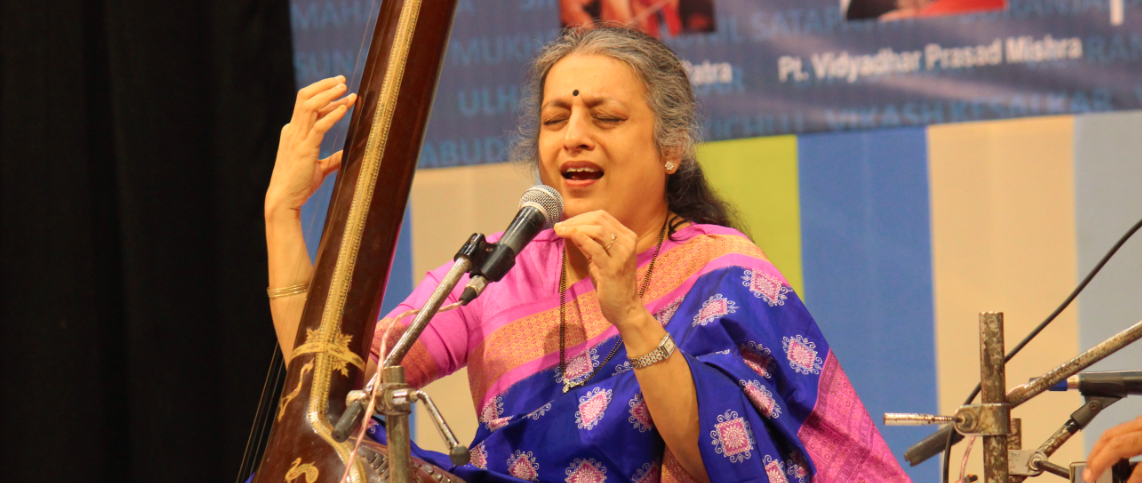
Darbar believes in the power of Indian classical music to stir, thrill, and inspire. Explore our YouTube channel, or subscribe to the Darbar Concert Hall to watch extended festival performances, talk and documentaries in pristine HD and UHD quality.
Welcome to Living Traditions - a new written collection by Darbar's George Howlett, exploring how music with ancient...
Read More 
Ustad Abdullah Khan is the last shehnai player to play the composition of Ustad Bismillah Khan in Pakistan. Following...
Read More 
The Hindustani slide guitar pioneer discusses instrument creation and the hidden harmony in ragas. By George Howlett...
Read More 
The beginner's guide to Indian classical music. Whether you’re completely new to raga music or just need a refresher, we’ve put together this brief overview of all things raga music to help you feel at ease when visiting one of our concerts or watch our videos on our YouTube or our Darbar Concert Hall.
Keep up to date with the latest news, events, music and musings across our social channels
For hundreds more clips and shorts, vist our YT page here 